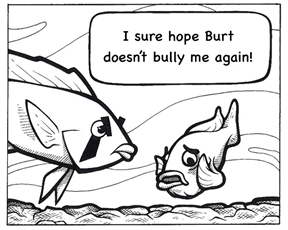Model Fish & Model Brains!: Burt’s 3D Printing Adventure
Hello! It’s Burt again. Today, my researcher friends took me outside the lab for a photoshoot. My friends wanted to be able to look at us cichlids outside of the water (why anyone would want to go there, I don’t know). They told us they wanted to make a 3D model of our species, and they chose me to be their study template! We visited LSU’s Communication across the Curriculum (CxC) office and the LSU Engineering Department, where they had me waggle my tailfin for their 3D scanner, and I learned about the 3D scanning and printing process.
3D scanning is the process of using a laser and cameras to analyze an object’s shape, size, and color. As the laser moves over the object, the cameras record the change in distance of the laser. The computer then uses the data to make small triangles or squares in 3D space, in what is called a “point cloud” model. Information from one side isn’t enough, so the scientists asked me to spin around for them so they could take images from lots of angles! After we got all the pictures, I watched as they had to “align” the separate images, putting together a puzzle using the colors and shapes on my body as references. Sometimes, the model is left with holes, so the computer uses a complex algorithm to estimate the shapes of the missing pieces to complete the image.
Guess what else? The researchers also wanted to have a model of my brain!, so they took to a program called Sculptris to digitally “sculpt” a model of my brain so they could print that out too. I heard them say that my brain is pretty similar to theirs in a lot of ways, but since I’m much smaller than they are they needed a bigger version of it to study and teach everyone else how cool our brains are!
Finally, we were ready to print, and my friends and I went back to the CxC office and Engineering department. LSU’s 3D printer is what is called a fused deposition model. The printer is able to deposit, or “extrude”, liquid plastic onto a surface. As soon as the plastic leaves the nozzle, it hardens onto the surface. By depositing this plastic layer by layer, a model is built up. After printing, it takes a soothing dunk in a solution to remove the dissolvable support plastic that held up the Burt model during printing, and then it’s done! I look even better than I thought I did!






Comments
Post a Comment